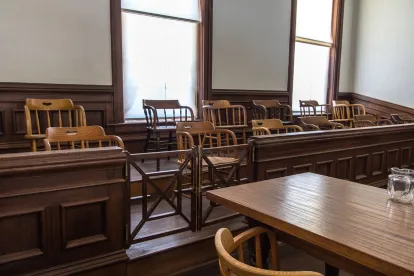When I tell family and friends what I do for a living, one of the many questions I get is, “Can you really predict how a juror will vote in deliberations?”
The short answer is “No.” Jury consultants are not psychics; there are too many variables at play and too many unknowns to make such predictions accurately 100% of the time. However, consultants who apply sound principles of psychology and statistics can frequently estimate the direction that a juror will lean and are accurate in those estimates more often than not.
In other words, jury consultants are concerned with tendencies. We consider the attitudes and experiences of each potential juror and how these characteristics have shaped their view of the world. Then, we assess how a person with those views will likely evaluate the facts of a given case.
Knowing this methodology, the next questions become, “How accurate are those predictions?” and “How are they any better than a seasoned trial lawyer’s intuition?”
To answer the “how’s,” we must first examine the “why.” We know from thousands of mock trials and hundreds of post-trial interviews that different jurors can hear the same facts, same witnesses, same legal arguments, and same instructions, yet come to very different conclusions. Why is that?
It’s All About Perspective
Certainly, the facts of the case and the evidence presented are going to have the greatest impact on verdict outcome. However, in most cases, certain facts are ambiguous, and the claims at issue involve some type of interpretation.
In negligence cases, jurors are asked to determine “what a reasonable person would do under the same or similar circumstances.” In a contract case, they might be asked whether the plaintiff “reasonably relied upon a statement.” Well, what is reasonable to one person may be unreasonable to another. And, in most cases, reasonable minds can disagree. It is not uncommon for both sides’ counsel to feel that they are in the right.
It all comes down to perspective. Trying to predict which way a juror will lean is really all about trying to figure out (during jury selection) which perspective they are likely to adopt. Every piece of evidence, every bit of testimony, and every argument is going to be viewed through a perspective shaped by that juror’s experiences and core values.
Confirmation Bias
Once you are able to identify a juror’s core beliefs, you can often accurately estimate their final verdict. That’s due to a phenomenon known as “confirmation bias.” Confirmation bias is the tendency to interpret new evidence as confirmation of one’s existing beliefs or theories.
A relatively recent example of this bias was the public’s reaction to the Supreme Court confirmation hearings of Justice Brett Kavanaugh. Those who supported Kavanaugh prior to the hearing thought the testimonies only reinforced their position. They viewed Dr. Ford’s tearful recollection as an obvious dramatization of events, plagued with inconsistencies and selective recall.
Meanwhile, her supporters viewed the testimony as genuinely raw, and understandably hazy on some details while focused on others, due to the passing of time and the trauma of the assault. If you asked proponents of both sides to recount what happened during the hearing, you are likely to hear two very different stories—neither of which will be entirely accurate.
This is no different than what happens in a deliberation room. As jurors try to recount the evidence they saw and the testimonies they heard, competing stories frequently emerge. That’s because people tend to seek out, pay attention to, and remember the details that support their pre-existing beliefs—and they ignore, discount, or forget the details that contradict those beliefs.
In the simplest of terms, jurors’ evaluations of the case will depend upon the lens through which it is viewed. If you can determine the lens, you have a better chance of determining the outcome.
Identifying the Lens With Jury Research
Once you understand these foundational principles, the goal of jury selection is to identify the attitudes and experiences that are likely to shape the lens. The most effective means of doing so is through pre-trial jury research.
THE JURY RESEARCH PROCESS
Mock trials, deliberation groups, and large-scale community surveys allow you to poll representative jurors on a wide range of experiential and attitudinal questions prior to participants hearing about any case information. For our mock jury studies, these “pre-stimulus questionnaires” typically consist of over 100 questions (many with multiple subparts), resulting in hundreds of variables we can analyze.
These juror representatives then hear a synopsis of the case facts, either presented argumentatively in a mock trial or deliberation group format or written in point/counter-point fashion for large-scale survey research. Typically, the more information presented to jurors, the more reliable the resulting profiles will be. Still, even a condensed summary of the case can produce valuable insights, because the lens a juror applies to even a small amount of information is likely to be the same lens they would apply to the additional facts and evidence supporting each side’s case.
Jury research of this kind concludes with either a verdict question or verdict-like questions that assess jurors’ opinions on key aspects of the case. From this information, jurors can be split into three main camps: strong plaintiff supporters, strong defense supporters, and middle-of-the-road jurors who are undecided, truly open-minded, or unpredictable flip-floppers.
DEVELOPING JURY PROFILES
The key to identifying the jury profiles comes from assessing the statistical relationships between jurors’ demographics, experiences, and attitudes, as well as their categorization as either a strong plaintiff supporter or strong defense supporter.
It isn’t enough simply to look at the data and observe with the naked eye that “more men appear to favor the defense than women.” One would actually have to perform a statistical analysis, accounting for sample size, to determine how likely it is that such an observation could be due to chance alone. Indeed, that is the goal of nearly all statistical analyses—to determine whether a true correlation exists or whether the finding is merely coincidental.
With a trained statistician evaluating and interpreting the data, this process results in a set of “jury profiles” (also known as “juror distinguishers”): a list of the demographics, experiences, and attitudes that correlate with strong plaintiff supporters and a corresponding list for their defense-leaning counterparts.
In this sense, jury consultants are applying hard science—not just intuition—to increase the likelihood of an accurate prediction. Moreover, depending on the size of the research sample, consultants can not only tell you which of the 100+ variables are most predictive of a juror’s leaning, but also how much weight to give to each.
Because every case is unique, profiles developed through research specific to your case will be the most reliable. However, when it’s not possible to conduct such research, jury consultants can turn to juror profiles developed for similar cases, as well as their general experience evaluating and interviewing thousands of jurors over the course of their careers.
Evaluating Trial Jurors
During jury selection, voir dire should be aimed at asking the questions that have the strongest statistical relationship to an unfavorable leaning. Because statistics is all about tendencies and trends, you can never truly predict an outcome, but the goal of jury selection is to increase your odds of obtaining a favorable result.
Take this drastically simplified example: If eight out of 10 jurors who favor strict government regulations are found to side with the opposition in your mock jury study, and at trial you are faced with deciding between two otherwise identical jurors—one with those views and one without—your best odds would be to strike the former. There’s still a 20% chance you’d be wrong, but you’d have the greatest likelihood of success by playing those odds.
Jury consultants are essentially making calculations like these in the aggregate by listening to the entirety of a jurors’ responses in voir dire and comparing it to the wealth of data and knowledge about the factors that are likely to correlate with a leaning in one direction or the other. Furthermore, by identifying jurors who demonstrate a combination of relevant factors, consultants can increase the odds even further.
PARTLY SCIENCE, PARTLY ART
If it were as simple as applying a statistical evaluation of certain factors, why hire a consultant at all? Why not plug the factors into computer software to determine the best statistical outcome? Well, in many instances, it’s not just what the jurors say in their responses, but how they say it.
For instance, if seven out of 10 cancer survivors side with plaintiffs in cases similar to yours, you also need to think about what differentiates those seven individuals from the other three. Once again, it’s all a matter of perspective.
A juror who painstakingly relates to being a “survivor from a long battle with cancer” is qualitatively different from a juror who nonchalantly says that he “had cancer.” These characterizations imply that the experience had a greater emotional impact on the former juror than it did on the latter. And it may be that this emotional reaction to surviving cancer is the stronger correlate to a plaintiff verdict than the cancer diagnosis alone. So, confronted with a juror who seems unphased by the experience, it might not be wise to simply play the numbers game; maybe that juror isn’t the best use of your strike after all.
Being mindful of intricacies like these adds yet another layer to the analysis. That’s where the art of jury selection—and the expertise and intuition of the consultant—comes into play.
Conclusion
Prediction accuracy will depend upon many factors, including the skill and experience of the consultant, the quality of the jury research used to develop the profiles, the attorneys’ ability to elicit the necessary information during voir dire, and the jurors’ willingness to divulge such information.
In fact, judicial constraints on the time allotted for voir dire and the type of information that may be sought stand to have the largest impact on the ability to make accurate predictions.
Caveats aside, both attorneys and jury consultants are typically able to apply their experience and common sense to estimate juror leanings at a rate better than chance alone (i.e., more than 50% of the time). However, consultants have the additional statistical arsenal of data to rely upon, additional opportunities to hone their intuition, and a greater understanding of decision-making psychology, which can further increase the likelihood of accurate predictions.
So, while a consultant’s predictions can never be guaranteed, with so much on the line at trial, wouldn’t you want to boost the odds in your favor?




 />i
/>i
